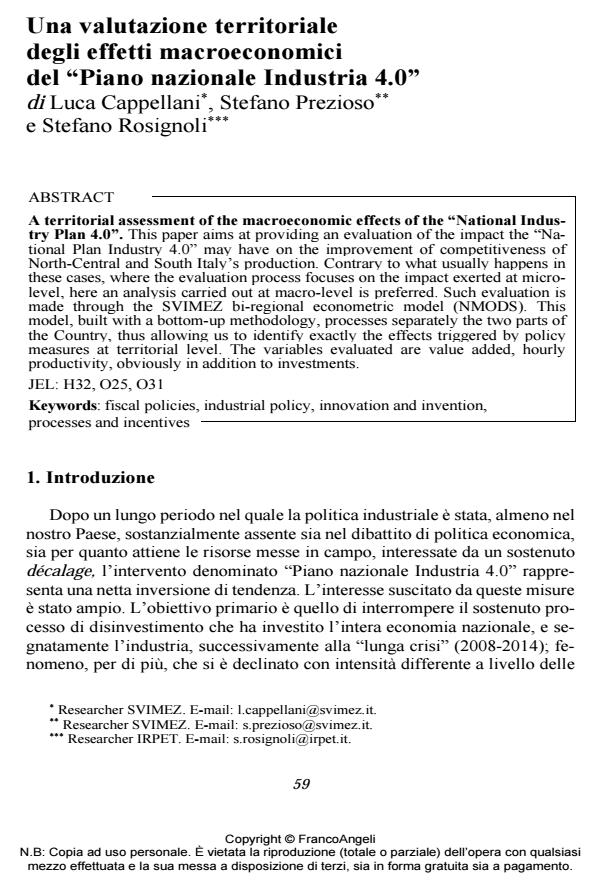Una valutazione territoriale degli effetti macroeconomici del "Piano nazionale Industria 4.0"
Titolo Rivista ECONOMIA PUBBLICA
Autori/Curatori Luca Cappellani, Stefano Prezioso, Stefano Rosignoli
Anno di pubblicazione 2018 Fascicolo 2017/2
Lingua Italiano Numero pagine 33 P. 59-91 Dimensione file 376 KB
DOI 10.3280/EP2017-002004
Il DOI è il codice a barre della proprietà intellettuale: per saperne di più
clicca qui
Qui sotto puoi vedere in anteprima la prima pagina di questo articolo.
Se questo articolo ti interessa, lo puoi acquistare (e scaricare in formato pdf) seguendo le facili indicazioni per acquistare il download credit. Acquista Download Credits per scaricare questo Articolo in formato PDF

FrancoAngeli è membro della Publishers International Linking Association, Inc (PILA)associazione indipendente e non profit per facilitare (attraverso i servizi tecnologici implementati da CrossRef.org) l’accesso degli studiosi ai contenuti digitali nelle pubblicazioni professionali e scientifiche
A territorial assessment of the macroeconomic effects of the "National Industry Plan 4.0". This paper aims at providing an evaluation of the impact the "National Plan Industry 4.0" may have on the improvement of competitiveness of North-Central and South Italy’s production. Contrary to what usually happens in these cases, where the evaluation process focuses on the impact exerted at micro-level, here an analysis carried out at macro-level is preferred. Such evaluation is made through the SVIMEZ bi-regional econometric model (NMODS). This model, built with a bottom-up methodology, processes separately the two parts of the Country, thus allowing us to identify exactly the effects triggered by policy measures at territorial level. The variables evaluated are value added, hourly productivity, obviously in addition to investments.
Parole chiave:Fiscal policies, industrial policy, innovation and invention, processes and incentives
Jel codes:H32, O25, O31
Luca Cappellani, Stefano Prezioso, Stefano Rosignoli, Una valutazione territoriale degli effetti macroeconomici del "Piano nazionale Industria 4.0" in "ECONOMIA PUBBLICA " 2/2017, pp 59-91, DOI: 10.3280/EP2017-002004